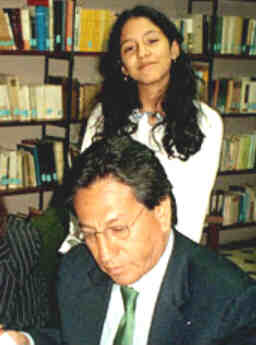Deaths
which occurred on a December 16:
2002 Stephen Paul Rauen, 15, by a pickup truck driven by
a 17-year-old boy, after Rauen jumped on the hood, was thrown to the ground
when the driver slammed on the brakes and then dragged under the vehicle
for a short distance, in Albuquerque. It was a stunt allegedly inspired
by one in “Jackass: the Movie”, though its producers deny that
there is anything similar in it.
2001 Yakoub Dakidak, senior Hamas military wing activist,
killed after nightfall by Israeli troops which had entered Palestiniain
Hebron, who say that he was fleeing arrest..
2001 19 elderly and psychiatric patients, by fire in their institutional
home, a prefab, near Buccino, Italy, during the night..
2000 Mohammed Fahad Abdel-Ghani, 70, Palestinian, from wounds
caused by Israeli gunfire the day before, as he crossed a road near a
clash at Ajar, south of Jenin, West Bank. It brought to at least 326
the number of people killed in 12 weeks of the al-Aqsa intifada, including
273 Palestinians, 13 Israeli Arabs and 38 Israeli Jewish soldiers and
civilians.
2000 Magomed Ismailov, his wife and two daughers, shot by Russian
looters in Alkhan-Kala, Chechnya, during a "cleansing operation".
1985 Paul Castellano, reputef organized-crime boss, shot near
a New York City restaurant.
1976 George a goose that lived to 49 years 8 months
1965 W Somerset Maugham, 91, English author ("Of Human Bondage")
1960: 134 persons, as a United Air Lines DC-8 and a TWA Super
Constellation collide over New York City.
1947 Gino Rossi, Italian artist born on 06 June 1884.
1944 Alton Glenn Miller, in Norseman small airplane which, in foggy
weather, strayed into the English Channel jettison area into which an aborted
raid of some 140 Lancaster bombers was unloading its bombs. US composer
and trombonist Major Miller, born on 01 March 1904, was the leader of the
US Air Force band in Europe and was hitching a flight from England (where
he performed his last concert on 12 December 1944) to Paris where he was
to lead a Christmas concert for the troops.
1939 Day 17 of Winter War: USSR
aggression against Finland. [Talvisodan
17. päivä]
More deaths due to Stalin's desire to grab Finnish territory.
Ladoga Karelia: the Finnish defence at Kitelä on the shores
of Lake Ladoga is partly broken by the 168th Soviet Division.
The Tolvajärvi offensive comes to a halt at Ristisalmi.
Eastern Isthmus: Finnish troops successfully repulse several
enemy assaults on the River Taipaleenjoki.
Salla: the position of the Finnish troops at Pelkosenniemi
is getting harder by the minute.
Central Isthmus: enemy shelling is pounding the entire length
of the 5th Division and 1st Division's defensive sector between
Summa and Muolaanjärvi.
Employers are forbidden on pain of damages from firing a
reservist on account of his being called up to the reserve.
General Headquarters confirms as official policy that the
fallen are to be sent home for burial. In accordance with
the decision of General Headquarters, every effort will be
made to send those fallen in battle home for burial.
Paris: students demonstrate throughout the day in support
of Finland.
|
1937 Glyn Warren Philpot, British painter of portraits and subject
pictures, born on 05 October 1884. — He was trained in London and
Paris and quickly established himself as a successful society portraitist
in the years before the First World War; elected A.R.A., 1915 and full
R.A., 1923. In 1931-2, Philpot made the courageous step of embracing
modernist influences in his art, producing a body of work marked by a
new simplicity of form and technique. — Glyn
Philpot by Sir Oswald Birley (1920, 100x75cm)
1922 Gabriel Narutowicz
1st President of Polish Republic assassinated
1920 Over 200'000 in Chinese
earthquake
One of the deadliest earthquakes
in history hits the Gansu province of mid-western China, causing
massive landslides and the deaths of over 200'000 people. The
earthquake, which measures an 8.5 magnitude on the Richter scale,
affects an area of some 65'000 square kilometers, including
ten major cities. The great devastation caused by this notorious
earthquake was due largely to poor soil conditions throughout
the Gansu province, and by the fact that for almost three hundred
years there had been no recorded earthquakes in the region to
stabilize gradual changes to the landscape. |
1916 Grigori Rasputin, a Russian monk with great influence over
the tsar, is murdered by a group of noblemen.
1907 Fritz Beinke, German artist born on 23 April 1842.
1890 Sitting
Bull, 56.
Crow Foot (Sitting Bull's son),
17
Black Bird, 43.
Catch the Bear, 44.
Spotted Horn Bull, 56.
Brave Thunder, No. 1, 46.
Little Assiniboine, 44.
Chase Wounded, 24 [Wounded is
his name, he was killed].
James Little Eagle, Fourth Sergeant
of Police.
Paul Afraid-of-Soldiers, Private
of Police.
John Armstrong, Special Police.
David Hawkman, Special Police.
http://www.pbs.org/weta/thewest/wpages/wpgs680/sbarrest.htm
An Account of Sitting Bull's Death by James McLaughlin, Indian
Agent at Standing Rock Reservation (dated 12 January 1891) reports
the above deaths in the fight that resulted from the attempt
to arrest Sitting Bull by 39 Indian policemen directed by the
agent. (The report says it happened early on 16 December, Britannica
has 15 December). In addition:
Henry Bull Head, First Lieutenant of Police, died 82 hour
after the fight (he is the one who shot Sitting Bull dead).
Charles Shave Head, First Sergeant of Police, died 25 hours
after the fight.
Strike the Kettle, wounded, now at Fort Sully, a prisoner.
Alexander Middle, Private of Police, wounded, recovering.
Brave Thunder, No. 2, wounded, recovering rapidly.
Bull Ghost, wounded, entirely recovered.
In South Dakota, Sitting Bull,
a leader of the Hunkpapa Teton Sioux, is killed by Indian
police at his home in a remote corner of the Standing Rock
Reservation, allegedly while resisting arrest. Sitting Bull,
born in the Grand River Valley in what is now South Dakota,
gained early recognition in his Sioux tribe as a capable
warrior and a man of vision. In 1864, he fought against the
US army forces under General Alfred Sully at Killdeer Mountain,
and shortly thereafter dedicated himself to Sioux resistance
against ineffectual US-Indian treaties and forced Indian
internment on reservations. Sitting Bull soon gained a following
in not only his own tribe, but in the Cheyenne and Arapaho
Native-American groups as well. In 1873, in what would serve
as a preview for the infamous Battle of Little Bighorn three
years later, an Indian military coalition featuring the leadership
of Sitting Bull skirmished briefly with Lieutenant Colonel
George Armstrong Custer. Sitting Bull was not a strategic
leader in the US defeat at Little Bighorn, but his spiritual
influence inspired Crazy Horse and the other victorious Indian
military leaders. Sitting Bull subsequently fled to Canada,
but in 1881 returned to the US and surrendered. He was
held as a prisoner of war at Fort Randall in South Dakota
territory for two years, and then was permitted to live on
Standing Rock Reservation straddling North and South Dakota
territory. In 1885, he traveled for a season with Buffalo
Bill Cody's Wild West show, before returning to Standing
Rock.
The spiritual proclamations of
Sitting Bull influenced the rise of the "Ghost Dance," an Indian
religious movement that proclaimed that the white people would
disappear and that the dead Indians and buffalo would return.
By 1890, his support of the religion had brought him into disfavor
with government officials, and on 15 December 1890, forty-three
Indian police burst into Sitting Bull's house in the Grand River
area of South Dakota, and took him at gunpoint. There is confusion
as to what happened next. By some accounts, the leader of the
police was shot and immediately turned and gunned down Sitting
Bull, while others maintain that the police were instructed
by Major James McLaughlin, director of the Standing Rock Sioux
Agency, to shoot the chief at any sign of resistance. Whatever
the true details, Sitting Bull was fatally shot and died within
hours. Subsequently, the Indian police hastily buried his body
at Fort Yates within the Standing Rock Reservation.
After many years of successfully
resisting white efforts to destroy him and the Sioux people,
the great Sioux chief and holy man Sitting Bull is killed
by Indian police at the Standing Rock reservation in South
Dakota.
One of the most famous Native
Americans of the 19th century, Sitting Bull (Tatanka Iyotake)
was a fierce enemy of Anglo-Americans from a young age. Deeply
devoted to the traditional ways, Sitting Bull believed that
contact with non-Indians undermined the strength and identity
of the Sioux and would lead to their ultimate decline. However,
Sitting Bull's tactics were generally more defensive than
aggressive, especially as he grew older and became a Sioux
leader. Fundamentally, Sitting Bull and those associated
with his tribe wished only to be left alone to pursue their
traditional ways, but the Anglo settlers' growing interest
in the land and the resulting confinement of Indians to government-controlled
reservations inevitably led to conflicts. Sitting Bull's
refusal to follow an 1875 order to bring his people to the
Sioux reservation directly led to the famous Battle of the
Little Bighorn, during which the Sioux and Cheyenne wiped
out five troops of Custer's 7th Cavalry.
After the Battle of the Little
Bighorn, Sitting Bull and his followers fled to Canada for
four years. Faced with mass starvation among his people,
Sitting Bull finally returned to the United States and surrendered
in 1883. Sitting Bull was assigned to the Standing Rock reservation
in present-day South Dakota, where he maintained considerable
power despite the best efforts of the Indian bureau agents
to undermine his influence. When the apocalyptic spiritual
revival movement known as the Ghost Dance began to grow in
popularity among the Sioux in 1890, Indian agents feared
it might lead to an Indian uprising. Wrongly believing that
Sitting Bull was the driving force behind the Ghost Dance,
agent James McLaughlin sent Indian police to arrest the chief
at his small cabin on the Grand River.
The Indian police rousted
the naked chief from his bed at 6:00 in the morning, hoping
to spirit him away before his guards and neighbors knew what
had happened. When the fifty-nine-year-old chief refused
to go quietly, a crowd gathered and a few hotheaded young
men threatened the Indian police. Someone fired a shot that
hit one of the Indian police; they retaliated by shooting
Sitting Bull in the chest and head. The great chief was killed
instantly. Before the ensuing gunfight ended, twelve other
Indians were dead and three were wounded.
The man who had nobly resisted
the encroachment of whites and their culture for nearly three
decades was buried in a far corner of the post cemetery at
Fort Yates. Two weeks later, the army brutally suppressed
the Ghost Dance movement with the massacre of a band of Sioux
at Wounded Knee, the final act in the long and tragic history
of the US genocide of the Plains Indians.
|
1872 John Frederick Kensett, US American Hudson River School painter,
specialized in landscapes, born on 23 March 1816. — LINKS
— Sunrise
among the Rocks of Paradise, Newport (1859, 46x76cm)
1866 Claude Anthelme Honoré Trimolet, French artist born on 16
May 1798.
1800 Guy Head, British artist born in 1753. — LINKS
—
1693 Jacques Rousseau, French artist born in 1630.
1698 Simone Pignone, Italian artist born in 1614.
1631 Some
4000 in eruption of Mount Vesuvius, which destroys 6 villages
0882 John VIII, Pope. He was forced to pay tribute to
the Saracens. He crowned three emperors, beginning with Charles le Chauve,
continuing through Louis le Bègue and concluding with Charles the
Fat. |

 Births
which occurred on a December 16:
Births
which occurred on a December 16:  1900
Victor S Pritchett literary critic/author (Myth Makers)
1900
Victor S Pritchett literary critic/author (Myth Makers)